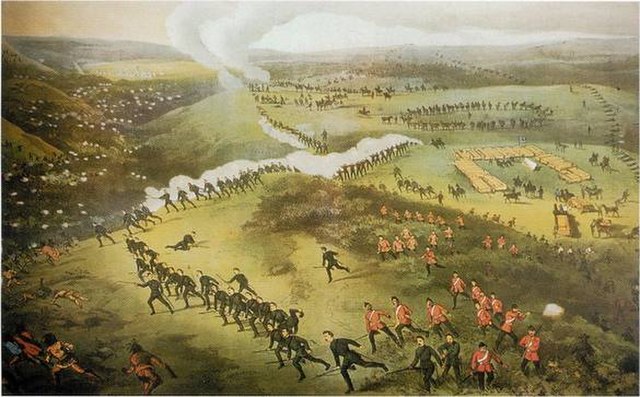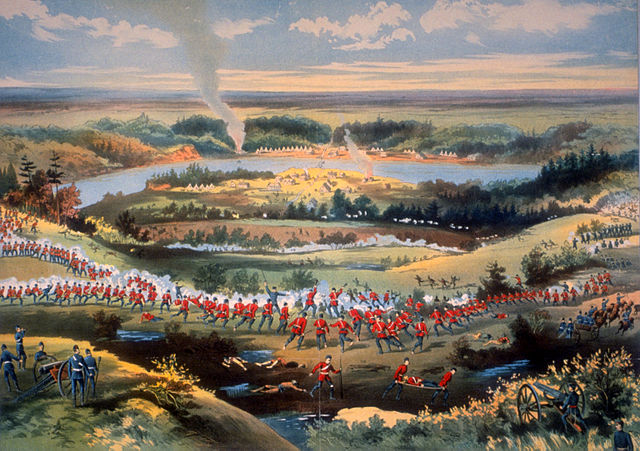Fort Battleford was the sixth North-West Mounted Police fort to be established in the North-West Territories of Canada, and played a central role in the events of the North-West Rebellion of 1885. It was here Chief Poundmaker was arrested, and where six Cree and two Stoney men were hanged for murders committed in the Frog Lake Massacre and the Looting of Battleford. In reference to the hanging, Prime Minister John A. Macdonald said in a letter that "the executions... ought to convince the Red Man that the White Man governs."
Fort Battleford National Historic Site
Ford Battleford
A newspaper clipping from December 1885 which closely followed the hangings suggests that Judge Charles Rouleau, who heard the case, was biased.
The North-West Rebellion, also known as the North-West Resistance, was an armed resistance movement by the Métis under Louis Riel and an associated uprising by Cree and Assiniboine of the District of Saskatchewan, North-West Territories, against the Canadian government. Many Métis felt that Canada was not protecting their rights, their land, and their survival as a distinct people. Fighting broke out in late March, and the conflict ended in June. About 91 people were killed in the fighting that occurred that spring before the conflict ended with the capture of Batoche in May 1885.
Top: Battle of Batoche Bottom: Battle of Cut Knife
Image: Battle of Batoche Print by Seargent Grundy
The federal government's violation of its treaties with the Cree spurred Big Bear, a Cree chief, to embark on a diplomatic campaign to renegotiate the terms of the treaties.
In March 1885, a skirmish broke out between the Canadian Militia, the North-West Mounted Police (NWMP), and Métis and aboriginal warriors.







